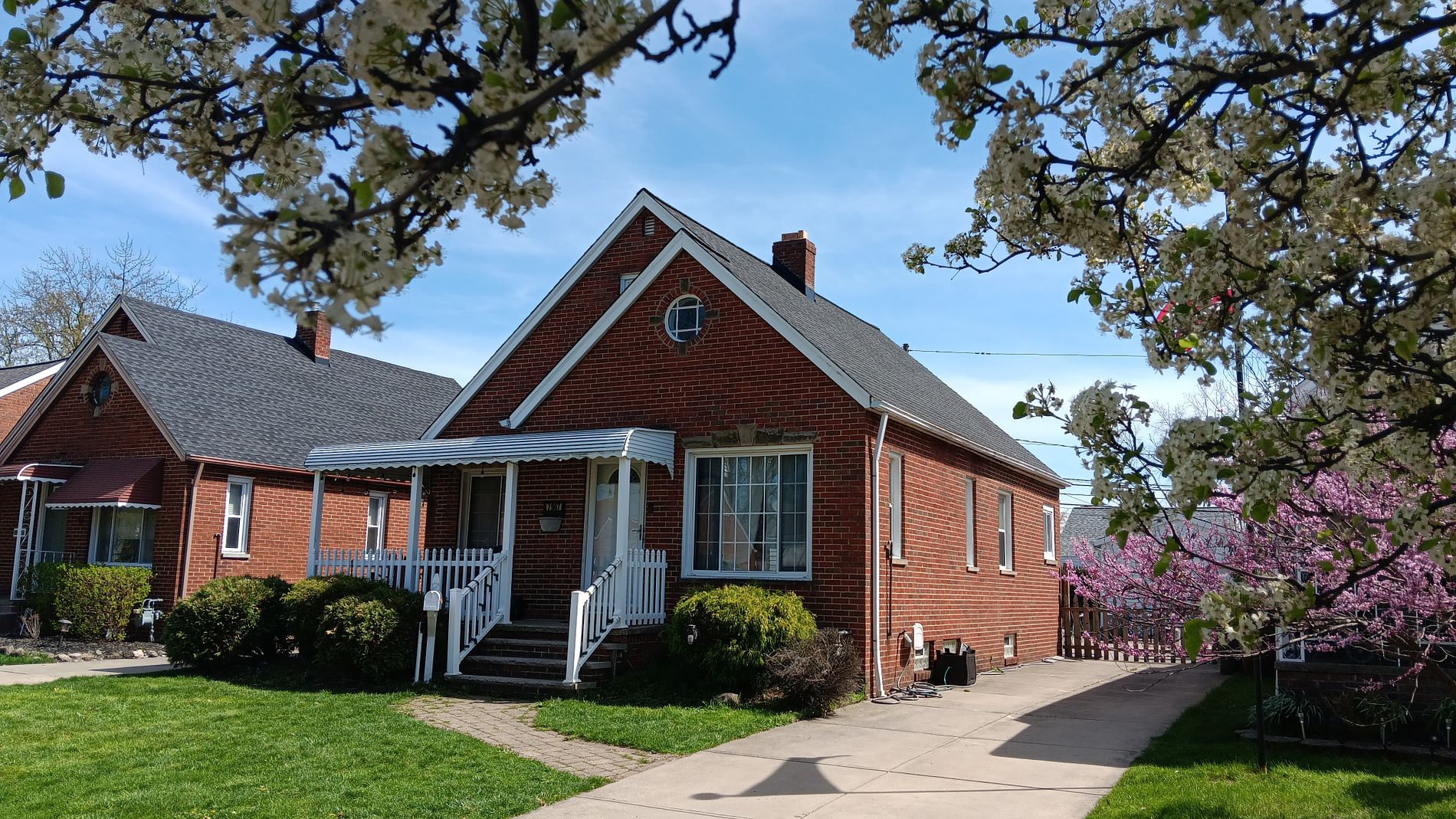
Types of Roof Shingles: Pros, Cons & Best Uses
4/21/25
8 Min Read
When it comes to choosing the right shingles for your home, the decision isn’t as straightforward as it seems. There are various types of roof shingles—each with unique advantages, challenges, and applications. Your choice can affect not only the aesthetic appeal of your home but also its durability, energy efficiency, and resale value.
To help you make an informed decision, this guide will cover:
- The most popular types of roof shingles, including their pros, cons, and best uses.
- Considerations for selecting the right shingles for your regional weather and home style.
- Insights from an experienced, local roofing contractor you can trust.
Whether you’re planning a new build, a roof replacement, or simply exploring options, here’s everything you need to know about choosing the best shingles for your home.
Asphalt Shingles
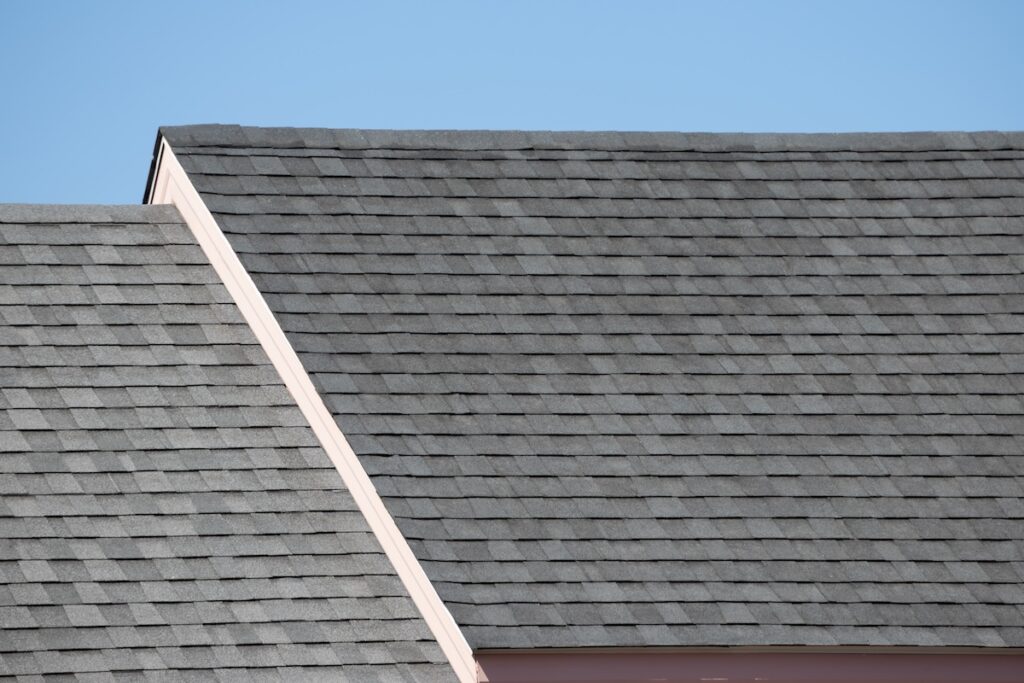
Asphalt shingles are ideal for homeowners on a budget or those looking for a quick and versatile solution. They’re great for moderate climates and standard roof styles.
What are asphalt shingles?
Asphalt shingles are the most commonly used roofing material in America. Made from a fiberglass or organic base coated with asphalt and topped with mineral granules, they are cost-effective and widely available.
Pros:
- Affordability: One of the cheapest roofing options on the market.
- Versatility: Available in various colors, styles, and textures.
- Ease of installation: Simple and quick to install, saving you time and labor costs.
- Durability: With proper maintenance, they can last 15–30 years.
- Fire resistance: Fiberglass asphalt shingles are highly fire resistant.
Cons:
- Weather sensitivity: Not as resistant to extreme weather as other materials—strong winds and hail can cause damage.
- Shorter lifespan: Compared to premium materials like metal or slate, asphalt shingles wear out faster.
- Environmental impact: They aren’t eco-friendly and can add to landfill waste.
Metal Shingles
Metal shingles are an excellent choice for homeowners looking for durability in areas prone to severe weather. They’re especially suited to modern or farmhouse-style homes due to their sleek appearance.
What are metal shingles?
Metal shingles are made of materials like aluminum, steel, or copper. Their growing popularity stems from their strength, longevity, and trendy modern aesthetic.
Pros:
- Longevity: Metal shingles can last 40–70 years with minimal maintenance.
- Durability: Highly resistant to water, wind, fire, and rust.
- Eco-friendly: Often made from recycled materials and 100% recyclable at the end of their lifespan.
- Lightweight: Easier to install without causing additional stress on the structure.
Cons:
- Upfront cost: Significantly more expensive than asphalt shingles.
- Noise: Rain or hail can make metal roofs noisier, though insulation can minimize this.
- Potential dents: Hail or fallen branches can dent certain types of metal shingles.
Slate Shingles
Slate shingles are perfect for historic or luxury homes, especially those in regions with long-term weather stability. While the investment is high, it’s worth it if longevity and aesthetic appeal are your top priorities.
What are slate shingles?
Crafted from natural stone, slate shingles are known for their classic elegance and unmatched durability. They have been used in roofing systems for centuries.
Pros:
- Unmatched durability: Slate shingles can last 75–150 years when properly cared for.
- Stunning appearance: Their natural stone finish adds a high-end, timeless look to any home.
- Fire resistance: Being stone, they are entirely non-combustible.
Cons:
- Heavy: The weight of slate shingles may require additional structural support.
- High cost: One of the most expensive roofing materials available.
- Complex installation: Requires skilled hands, like an experienced roofing contractor.
Wood Shingles
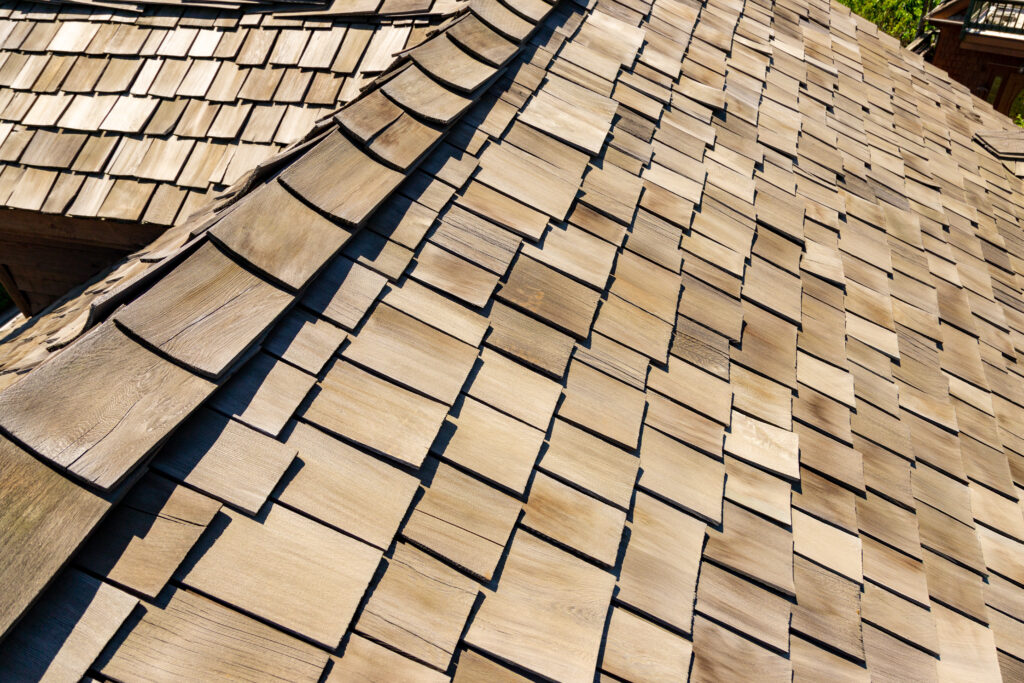
Wood shingles are often used on traditional or rustic homes in mild, dry climates. They’re great for homeowners who value aesthetics and don’t mind a bit of upkeep.
What are wood shingles?
Wood shingles, often made from cedar, redwood, or pine, bring a natural and rustic look to your roof. Unlike synthetic options, wood shingles age gracefully and develop a charming patina over time.
Pros:
- Unique aesthetic: Natural wood creates a warm, classic appeal that complements cottage or cabin-style homes.
- Good insulation: Wood shingles are excellent for natural insulation, improving energy efficiency.
- Eco-friendly: Biodegradable and often sourced sustainably.
Cons:
- Maintenance: Requires regular treatments to prevent mold, rot, and pests.
- Flammability: Unless treated with fire-resistant coatings, wood shingles can present a fire hazard.
- Weather damage: Especially vulnerable to extreme weather conditions like heavy rain or humidity.
Rubber Shingles
Rubber shingles are ideal for environmentally conscious homeowners who want a durable roof similar to slate but at a lower cost.
What are rubber shingles?
Rubber shingles, made from recycled materials like old tires, are an innovative and eco-friendly roofing option. They mimic the look of slate or wood but are more affordable and durable.
Pros:
- Eco-friendly: Made from recycled materials and fully recyclable.
- Durable: Resistant to cracking, disintegration, and storm damage.
- Cost-effective: Usually cheaper than slate while replicating its aesthetics.
- Lightweight: Easier to install than heavy materials.
Cons:
- Limited availability: Not as widely available as other roofing materials.
- Appearance: While they mimic other materials like slate, they may not have the same premium look.
- Fading: Prolonged sun exposure can cause some rubber shingles to fade over time.
Luxury Shingles
Luxury shingles are perfect for homeowners who want the look of natural materials like slate or wood but need a more affordable and durable option. They’re ideal for homes in regions with variable weather.
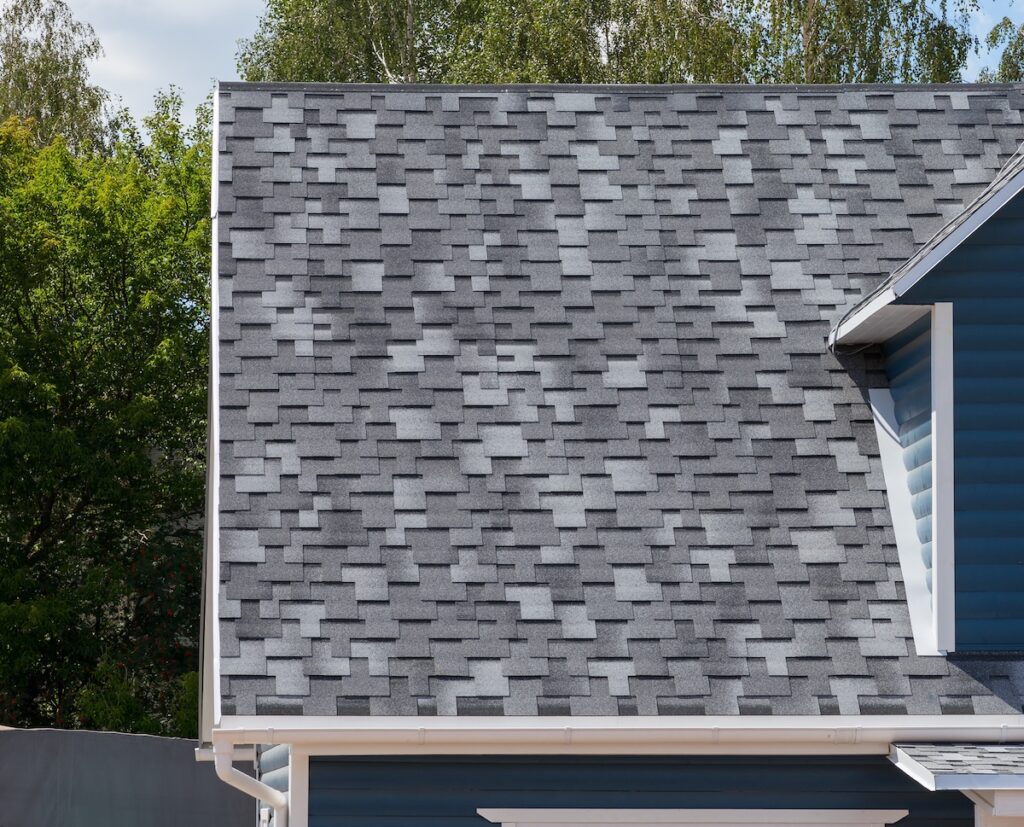
What are luxury shingles?
Luxury shingles are premium asphalt shingles that offer enhanced aesthetics and durability. They often mimic the look of natural slate or wood but come at a fraction of the price.
Pros:
- High-end appearance: Provide a luxury look without the steep price of slate or wood.
- Durable: Resist cracking, splitting, and other types of wear and tear better than standard asphalt shingles.
- Weather resistance: Many luxury shingles are designed to handle extreme weather conditions.
Cons:
- Cost: More expensive than traditional asphalt shingles (but still cheaper than natural slate or wood).
- Weight: Heavier than standard asphalt shingles, which may require additional structural support.
Other Roofing Materials
While shingles dominate the roofing market, there are other roofing materials to consider, depending on your needs.
- Clay Tiles: Long-lasting and perfect for areas with hot, sunny climates.
- Concrete Tiles: Affordable and extremely durable, suitable for various architectural styles.
- Solar Panels: A sustainable option that generates energy while protecting your roof.
- Green Roofs: Covered with vegetation, these energy-efficient roofs are ideal for eco-conscious homeowners.
- Composite Shingles: Lightweight and incredibly durable, these polymer shingles mimic the high-end appearance of natural slate or wood shake.
How to Choose the Best Roof Shingles for You
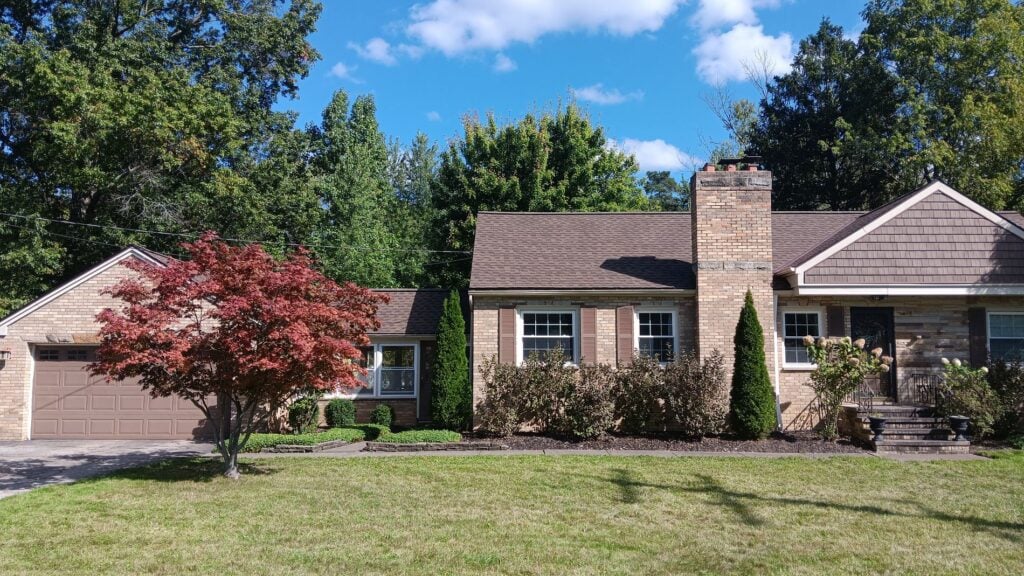
1. Assess Your Budget
Before committing to a roofing material, it’s essential to thoroughly assess your overall budget. Consider not only the upfront cost of the shingles but also any additional structural support your roof may require to accommodate heavier materials. Factor in long-term maintenance costs, such as routine inspections, potential shingles repairs, and the expected lifespan of the material. These ongoing expenses can significantly impact the total cost of ownership over time.
2. Consider Aesthetic Appeal
Your choice of shingles should align with the visual character of your home. Look for materials, colors, and profiles that enhance your home’s architectural style—whether it’s traditional, modern, or somewhere in between. Consider how the shingles will look with your siding, trim, and landscaping. A cohesive design improves curb appeal and may also increase your property’s resale value, making aesthetic considerations just as important as functional ones.
3. Evaluate Weather Conditions
Weather resilience is a critical factor when choosing the right shingles. Some roofing materials are designed to withstand specific climate challenges more effectively than others. For instance, metal shingles offer superior durability in storm-prone or high-wind regions due to their resistance to impact and uplift. Conversely, wood shingles are better suited for dry, moderate climates, as they can be vulnerable to moisture and rot in humid or rainy environments. Understanding your local weather patterns will help ensure your roof performs optimally year-round.
4. Prioritize Longevity
When investing in a new roof, think long-term. If you intend to remain in your home for many years, prioritize materials known for their exceptional durability and extended lifespan. Options like slate, tile, and metal shingles can last several decades with minimal maintenance, making them a wise investment for homeowners seeking lasting performance and peace of mind. Although the upfront costs may be higher, these materials often pay for themselves through reduced repair needs and replacement frequency.
5. Consult a Roofing Contractor
To make an informed and confident decision, it’s best to seek guidance from a qualified roofing contractor. A professional will perform a thorough inspection of your existing roof, identify any structural concerns, and provide tailored recommendations based on your specific needs and local building codes. They can also help you weigh the pros and cons of various shingle materials, ensuring you choose an option that balances durability, cost, and appearance effectively. Partnering with a contractor early can help you avoid costly mistakes and streamline your roofing project from start to finish.
Trust Buckeye State Roofing for Your Roofing Needs
Choosing the right types of roof shingles is vital for the safety, functionality, and visual appeal of your home. At Buckeye State Roofing, we bring years of expertise to your roofing project, ensuring your roof is installed with professionalism and precision.
If you’re ready to upgrade your roof or need guidance on selecting the best materials, contact us today for a free estimate. Together, we can build a roof that keeps your home protected while enhancing its beauty.
